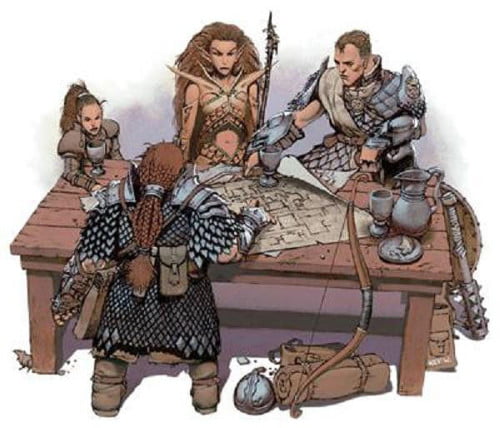Dungeons and Dragons 3.5 was absolute nonsense balance-wise, but it was remarkable because it was imbalanced in a whole variety of different ways that are good object lessons for designers to take on board when making your own RPG content. So, rather than one huge master-post explaining it, here’s one example:
Paralysing Potential
Did you play a spellcaster back in 3.5? Did you play a Cleric? A Druid? A Wizard? God help you, did you play an Archivist?
The 3.5 spell list is an absolute swamp of bullshit, a completely festering mire of options that include procedurally generated X damage over Y area with Z range math-up messes that really form the basis for what you can probably handle, balance wise, to spells which are unimpressive with one basic form, and totally busted if you think about them innovatively, spells designed to be worse versions of the former, multiple spells designed to fill the same space by designers working on different books, grandfathered together, spells designed to duplicate other spells just with a different flavour to try and keep the spell schools reasonably balanced, then some complete out-of-context nonsense that didn’t have any combat-or-existing mechanical application but suddenly changed the context of how combat even happened. Feel tired at the end of that sentence? Good, because it’s worse than that.
Spellcasters 3.5 were broken and it was easy to get a modest amount of broken just by paying attention to a few exploitable spells, but if you wanted to go deep, if you were the kind of player who was willing to marinate deep in the dank shit of supplemental sourcebooks or even just read through the ramifications of everything in the player’s handbook, if you were the person who bothered to use Scribe Scroll and stockpile every level 1 spell you didn’t wind up using in any given day until you had literally a library of the dang things, then you knew how broad, how busted, and how blinding your potential was.
There’s no surprise that players – despite the weakness – really appreciated Sorcerers. All sorcerers needed to know was a small handful of useful spells, rather than try to learn all of the spells present in the entire danging game.
The way I coped with it, myself, was to opt away from the full-bore spellcasters. My few times playing Cleric or Druid were times that DMs quickly started nerfing things on the fly. If you instead limited yourself to doing a smaller handful of things really well, you might be less powerful, but you’ll at least be able to make a choice on your turn without ever being stymied by the thousands of things you could do. Levelling up and building your character was still a long, agonising process, but at least that concentrated the wait.
These older editions would sometimes present you with complicated puzzles in the form of a combat arena and expect you to answer that question with a spell template; a line, a point, a single target, a circular template or maybe a chain. But then, the Wizard didn’t have to do that, they could answer it by teleporting away, by charming something, by becoming invisible, by summoning thirty tons of stone directly above the enemy, by becoming something else, by making someone else into something else, and all of these options were presented to you.
Now it’s your turn.
Pick something.
Go go go.
